 > Missionary Introduction
> Missionary Introduction
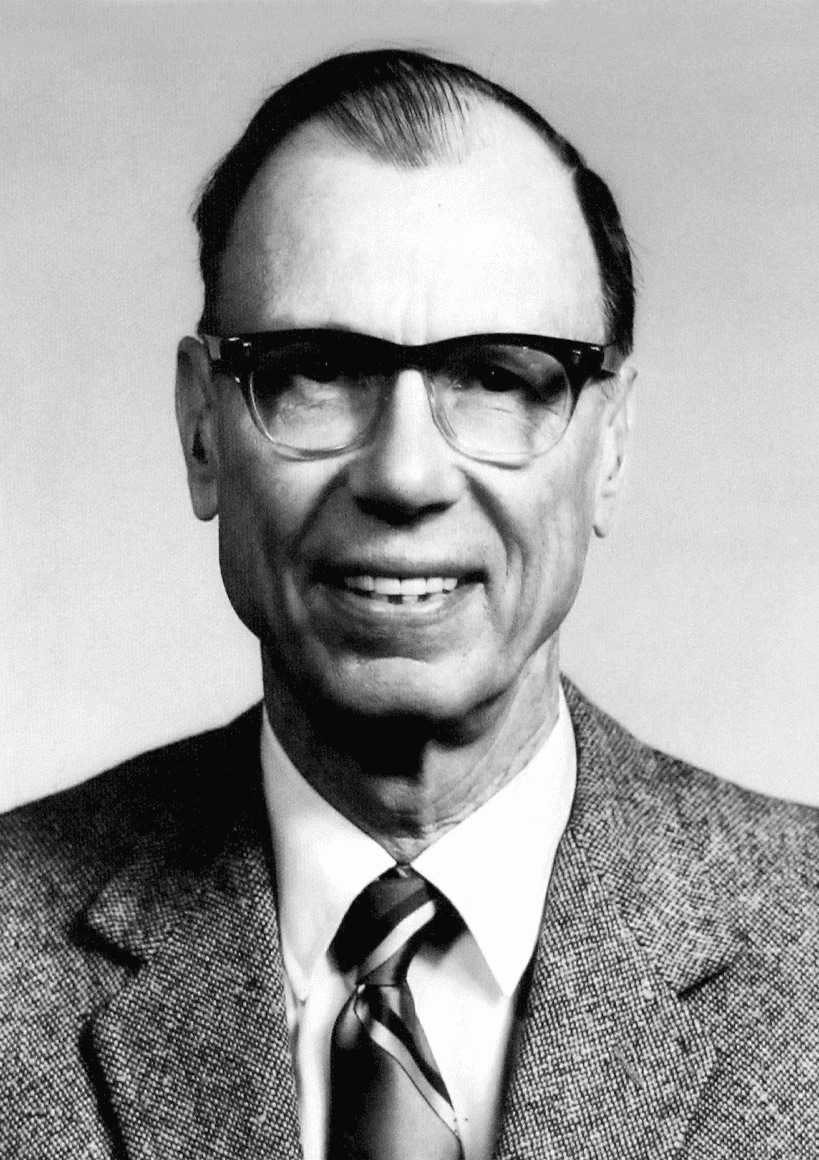
Howard Fergus Moffett, called Mapo Samyeol, was born on August 16, 1917 at the Pyengyang Missionary Base as the second son of Samuel Moffett and Lucia Fish Moffett. He was born in Pyengyang and raised as a native of Pyengyang until he was 17. With the dedication and successful ministry of his father, Samuel Moffett, Pyengyang emerged as a mission center in East Asia at the time, and even a foreign school for missionary children was established.
Moffett graduated from high school in Pyengyang in 1935, went to Wheaton College in the U.S, and later went to Northwestern University Medical School in Chicago. On 2 August 1941, while attending medical school, he married his fiancee Margaret.
In 1947, he was sent to the Northern Presbyterian U.S.A. where his father belongs, as a Korean missionary. The Moffett temporarily worked at Nanjing University Hospital in China because they could not come to Korea immediately, and after twists and turns, they arrived at Dongsan Christian Hospital in Daegu just before Christmas in December 1948.

Howard Moffett's father Samuel Moffett and mother Lucia Moffett
Moffett was inaugurated as the 7th director of Dongsan Christian Hospital in June 1949. At that time, a total of 132 people worked in the hospital, including 14 doctors, 7 interns, 22 nurses, 17 student nurses, and 72 other employees. Almost all employees attended morning services before starting work, and the entire hospital felt like a family.
He just took the helm of the hospital, but the Korean War broke out. So he passed over to Dr. Hwang Yong-un, then vice president, and went to Japan, where he returned to Daegu as a naval commander dispatched to the U.S. Air Force because he had served as a naval medical officer during World War II. However, as the North Korean military approached Daegu at the time and was on the verge of falling soon, With the permission of the US military authorities, Moffett took the hospital staff, family members, patients, and hospital equipment and fled to Busan in four train cars. Moffett's family returned to Daegu after U.S. Marines and South Korean troops landed in Incheon and defeated North Korean troops northward. Daegu was not captured, and the property of Dongsan Christian Hospital was safely preserved.
After the Incheon Landing Operation, the UN forces moved northward, and they arrived in Pyengyang on October 21, 1950, following the UN forces moving north as U.S. 5th Air Force medical doctors, and returned to their hometowns 15 years after leaving Pyengyang. Moffett tried to follow in his father's footsteps do missionary work and reclaim the missionary property in Pyengyang, but it was canceled due to the involvement of the Chinese army in the Korean War.
After joining the U.S. Air Force as a army surgeon in 1951, he moved to the U.S. mainland to work at McDill Air Force Base Hospital in Tampa, State of Florida. Since 1953, Chicago Hines V.A. completed a 3-year residency in internal medicine at the hospital, and he finally visited Korea in 1956 and worked at Severance Hospital in Seoul for a year studied languages. Dr. Kenneth Scott served as director on his behalf while Moffett was not in the hospital. Even while he was away from Dongsan Christian Hospital, Moffett set up a proxy to ensure that everything at the hospital went smoothly.
In the summer of 1957, Moffett finally returned to Dongsan Christian Hospital. From this point on, the rising season of the hospital began to take place.

Howard Moffett, who joined the U.S. Air Force as a army surgeon due to the outbreak of the Korean War and came back to Daegu
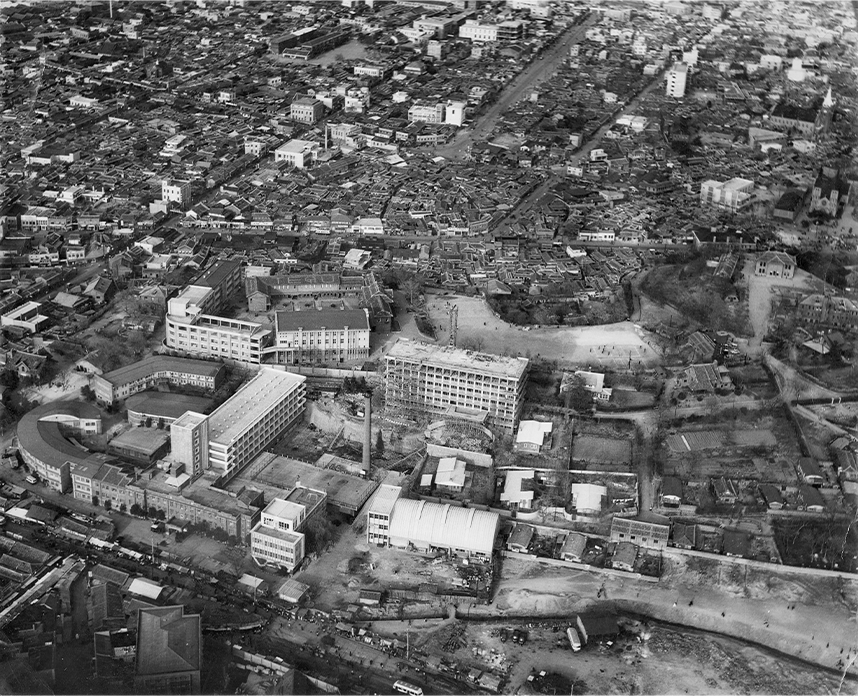
Dongsan Christian Hospital, 1960s
About 200,000 war orphans occurred in the Korean War. There were 20 orphanages in downtown Daegu alone and 29 in the suburbs. In the midst of this, the need to establish a hospital for orphans was raised. Dr. Robert W. Pierce of World Vision, who is called the father of a Korean orphan who established numerous orphanages in Daegu, donated $50,000 to Dongsan Christian Hospital. In addition to this money, a children's hospital with 60 beds in a three-story building was completed in October 1953 with assistance from the U.N. Korea Reconstruction Group and the U.S. Forces Korea. Moffett left Pierce's dedication as a symbol in the children's ward, designing the first letter W of World Vision, the English name of Seonjinhoe, as a pillar.
Moffett worked hard to distribute advanced medical technology to become a top-class hospital with Korean medical staff. Through this, the hospital's quality of treatment and management was recognized and renowned not only in Daegu but also nationwide.
In 1959, radiotherapy for superficial cancers began with 250KV X-ray devices (GE, water-cooled X-ray generators) and 100KV X-ray superficialis devices (air-cooled) which were donated by the U.S.
Neurosurgery, which opened in November 1964, reported the first successful treatment of "Spontaneous Spinal Epidural Hematoma" in Korea in 1978, and in April 1980, the first computerized tomography (CT) was introduced south of the Han River to treat various diseases.
In 1967, a global artificial kidney authority, Dr. William Kolff of the Cleveland Clinic in the U.S., donated an artificial kidney to treat patients with acute renal failure on December 8, which was the beginning of hemodialysis in Korea.
In October 1971, with the donation of the U.S. Presbyterian Missionary Society, radiation therapy was performed for the first time in the south of the Han River using the Cobalt-60 high-energy gamma-ray teletherapy, Philips.

Building a children's hospital with the first letter of World Vision W
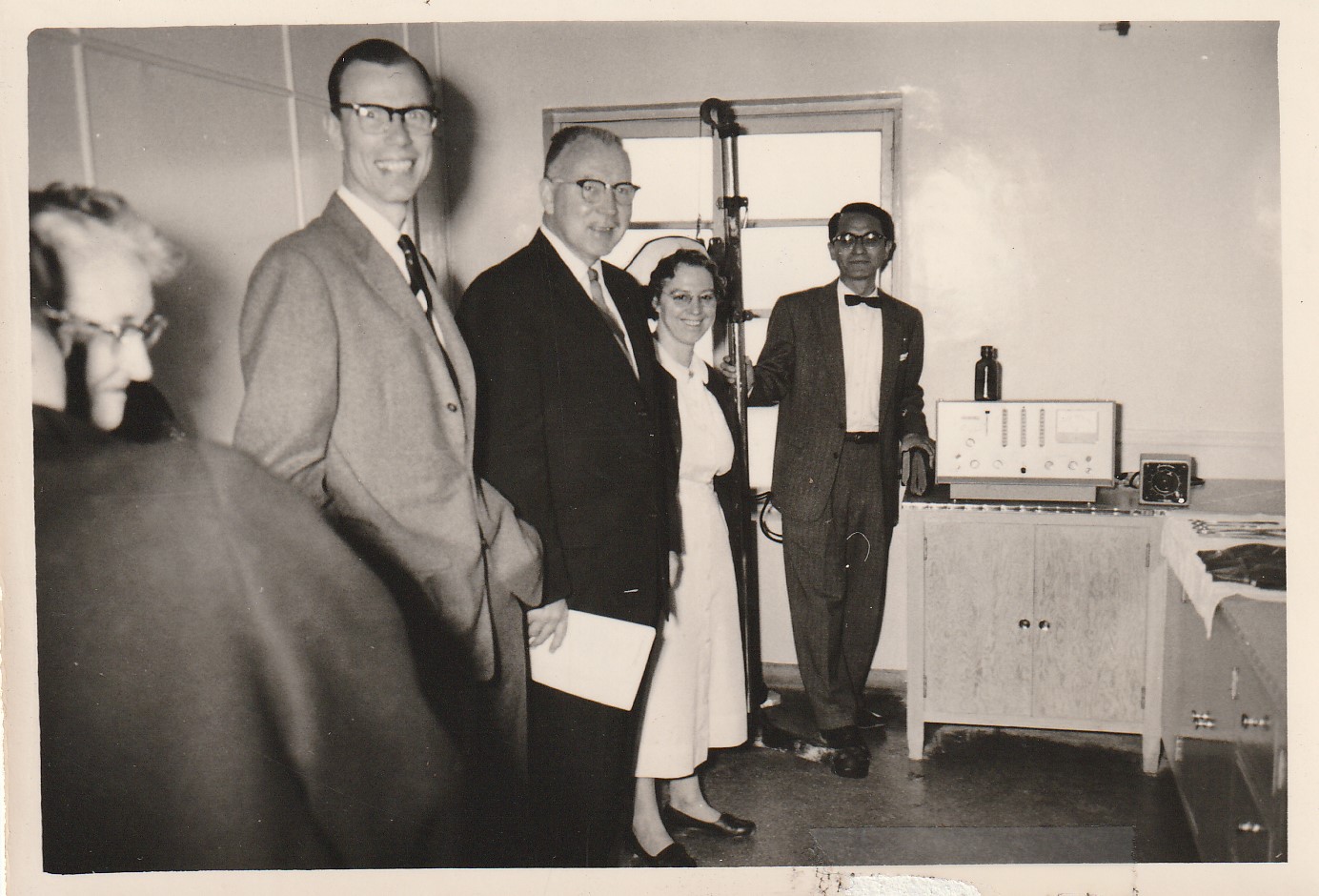
Donors and Howard Moffett in the Radioisotope Room, March 30, 1960.
In an effort to create a top-notch hospital, Moffett thought that doctors' medicine should be raised to the world level along with the spread of advanced medical technology. Therefore, hospital members and experts in various fields were invited as missionaries to provide an opportunity to transfer advanced medical technologies and techniques even if they did not go abroad.
In addition, to catch up with the development of modern medicine in the field of pathology technology, the Pathology Technology School affiliated with Dongsan Christian Hospital was opened in 1958 and produced many excellent pathology engineers until the school was closed in 1992.

List of invited missionaries in various specialized fields
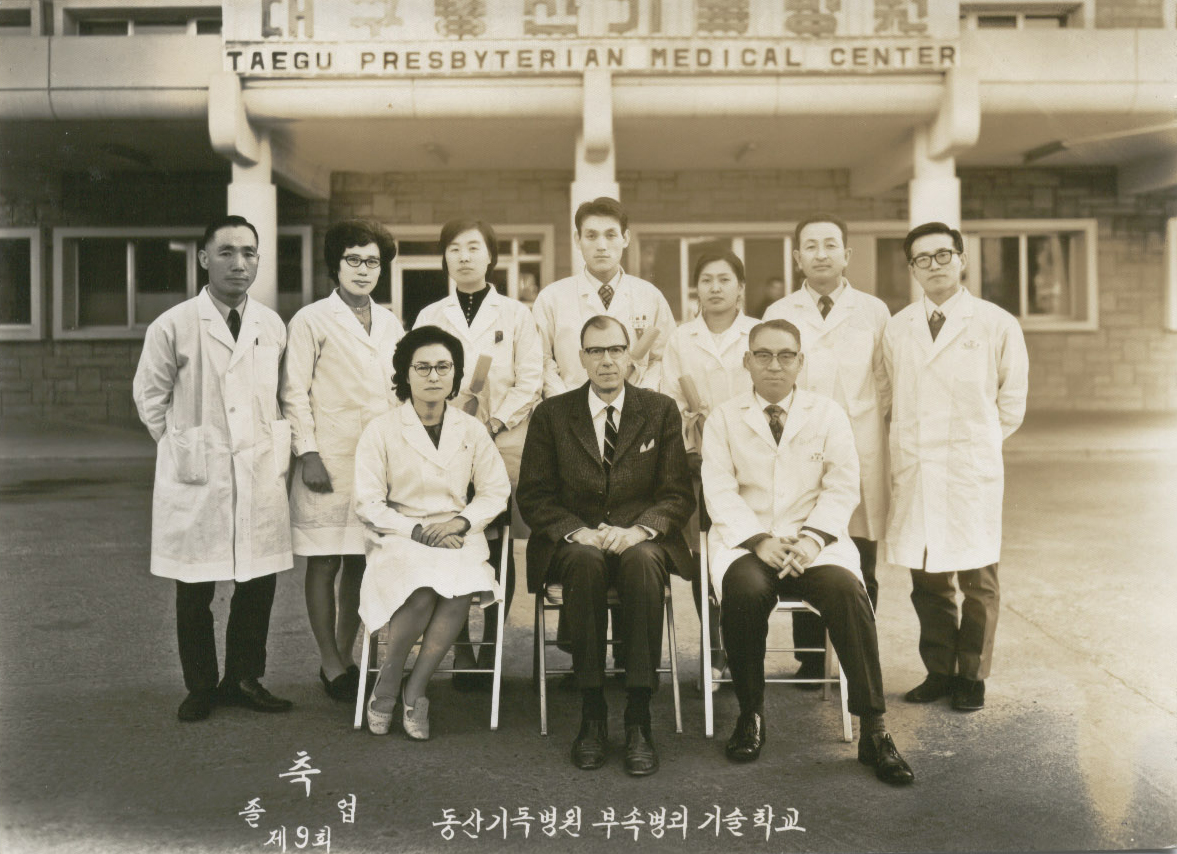
Howard Moffett at the 9th graduation ceremony of the pathological technology school, January 29, 1971
Moffett was also particularly interested in the treatment of patients with leprosy suffering. He took office as the fifth director of the Aerakwon in 1949, and served patients with leprosy patients for 37 years alternately as chairman and director.
In 1957, a settlement of about 12 acres (52,608㎡) was established in Suri-ri, Guji-myeon, Dalseong-gun, and 105 patients with leprosy were settled in the hospital to support themselves. On August 16, 1968, the name of the hospital was changed to Daegu Aerak Health Hospital, and in 2004, the name was changed to Daegu Aerakwon.
The nursing department training center at Dongsan Christian Hospital was approved and operated as a "Nursing High School affiliated with Dongsan Christian Hospital" by the U.S. Department of Military and Public Health in January 1948. As a result of his efforts to upgrade the nursing school to a university course, Moffett was approved as the Daegu Dongsan Christian Hospital Nursing School in November 1961. In addition, a seven-story nursing college building (5,363.81㎡) was completed in 1967 with a donation of $600,000 from the 4th Presbyterian Church in Chicago.
Moffett regularly visited Gyeongju for medical treatment. Then, he got to know Raymond C. Provost, a missionary, and through this, he established Gyeongju Christian Hospital on October 10, 1962, with the support of the First Presbyterian Church of Comberlandin the U.S. On November 30, 1989, Keimyung University, an educational foundation, acquired it and opened as Gyeongju Dongsan Hospital on March 15, 1991.
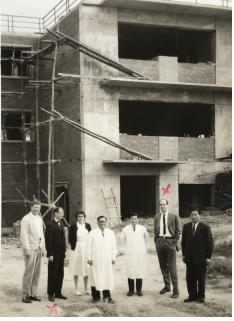
Howard Moffett at Aerak Health Hospital under construction
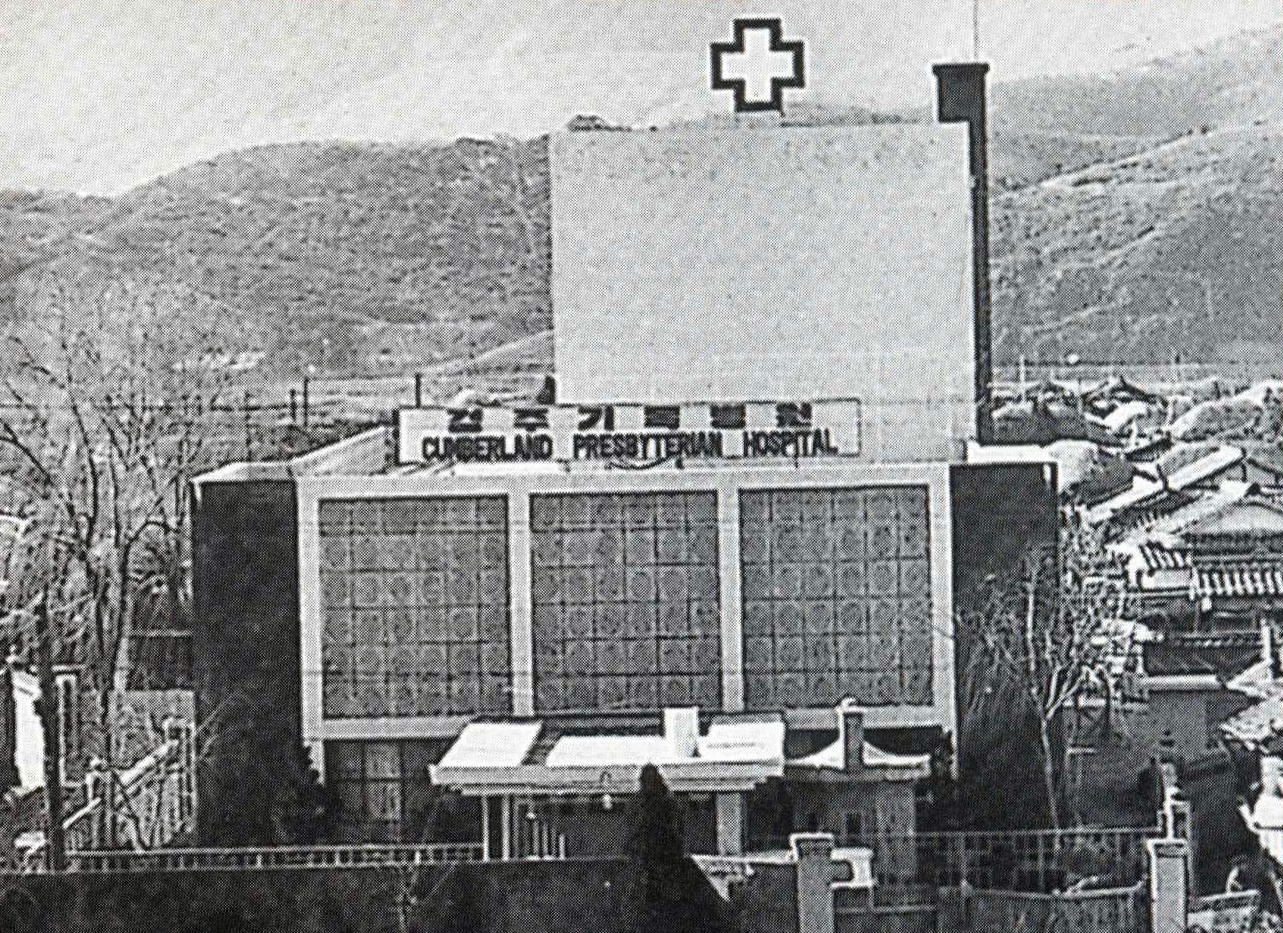
Gyeongju Dongsan Hospital, 1962
Moffett's most brilliant achievements were the completion of the Five-Year Hospital Development Plan and the New Development Plan. People at Dongsan Christian Hospital call this period the "era of Jungheung at Dongsan Christian Hospital."
He, along with his wife, Del Moffett, asked American and German philanthropists for sponsorship, and spent $1.07 million to build outpatient clinics, $1.25 million to build connections with the ward, and $135,000 to expand the branch and improve facilities. It also spent $245,000 on purchasing or replacing various medical equipment and $150,000 on building staff homes. Through this, inpatient wards, nursing college buildings, outpatient clinics, and new wards were established.
In addition, the new development plan will cost a total of $375,000 to expand the emergency treatment center and build a new physical treatment center. In addition, the old ward was demolished, build up were New McGaw Building, and expenses were allocated for the purchase of medical equipment. He also spent money on purchasing medical books and overseas training of major medical staff, especially strengthening the treatment project for leprosy patients, building houses for the head of the department, and working on branches and rural medical projects.

Howard Moffett's Hospital Development Plan
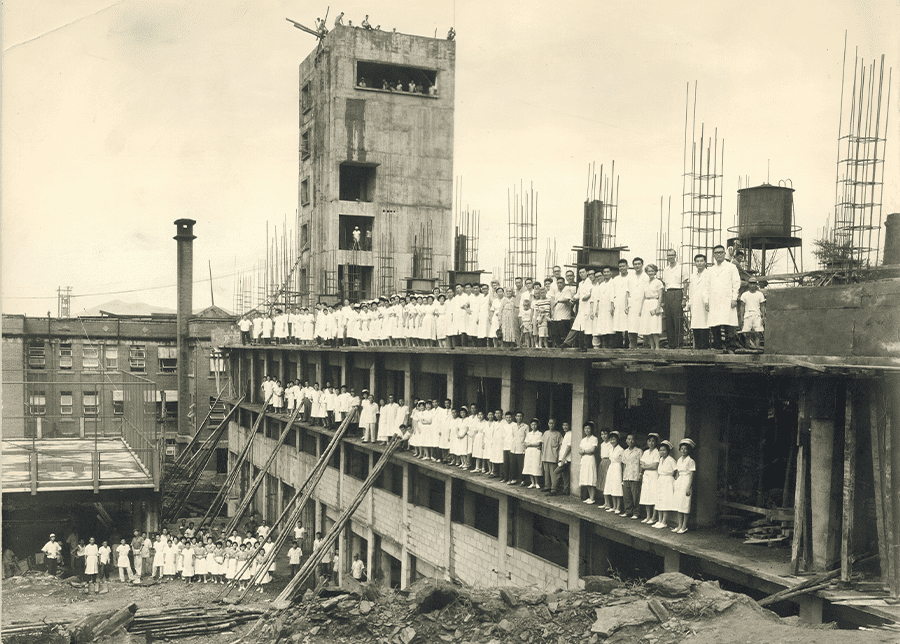
Howard Moffett to Visit the Inpatient Ward Construction Site, 1967
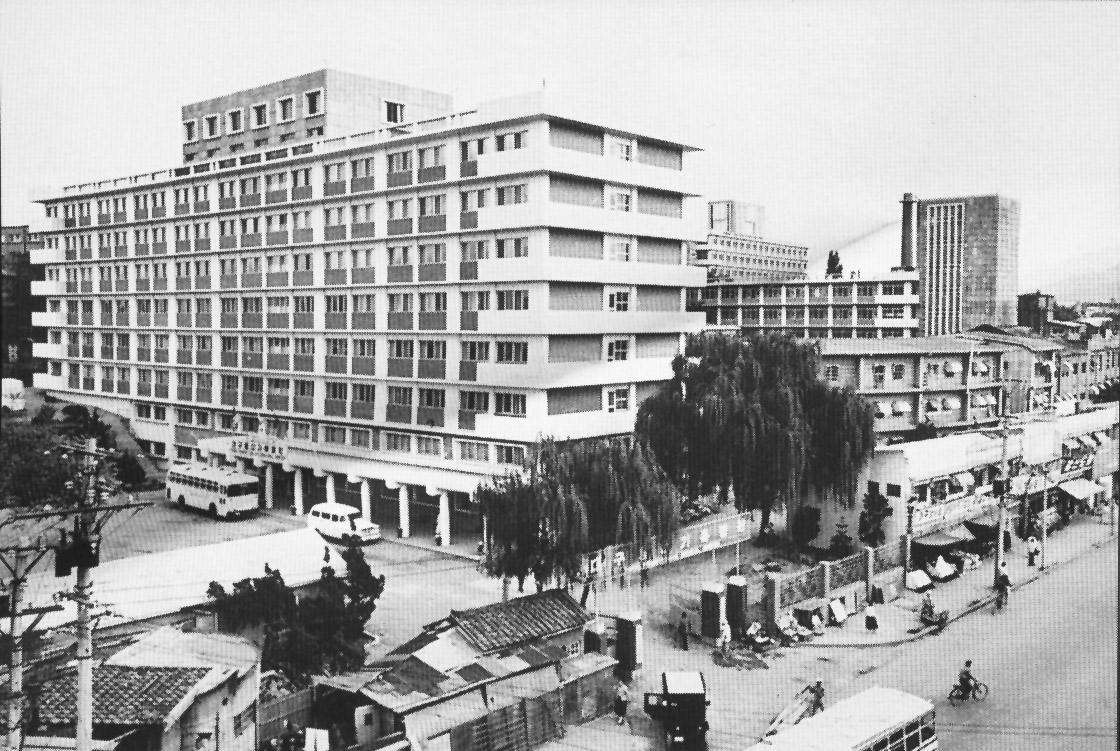
Completion of Outpatient Clinic in Modern Facilities, 1970

Keimyung University Dongsan Medical Center Nursing University Building, 1980
When Moffett was appointed to Dongsan Christian Hospital and took office as the director, he was the first to reorganize the Hospital Preaching Society. Since April 1951, the Hospital Preaching Society has organized the "Out-Patient Medical Service Missionary Team for Village" and went to Muui Village Medical Center every Saturday. From January 1955, He's touring orphanages, treating and evangelizing. In addition, rather than pioneering the church as in the days of Fletcher missionary, the missionary policy was implemented to support and self-reliant the already pioneered churches.
He especially tried to preach the gospel of Jesus Christ to nursing school students. In fact, Kim Young-ja, who graduated from the nursing school and became a professor at the time, visited the Moffett couple who attended the 80th anniversary ceremony of the nursing college, and gave her testimony and thanked the Maffet couple.
The peak of Moffett's educational mission was the merger of Keimyung University and Dongsan Christian Hospital, which were promoted to general universities, and a medical school was newly established as Keimyung University Dongsan Medical Center. He raised 1 billion won in 1979 to build a medical school and changed the name of the hospital to "Dongsan Christian Hospital affiliated with Gyemyeong University Medical School." Keimyung University and Dongsan Christian Hospital were merged with the approval of the Minister of Health and Welfare and the Minister of Education on October 18, 1980.
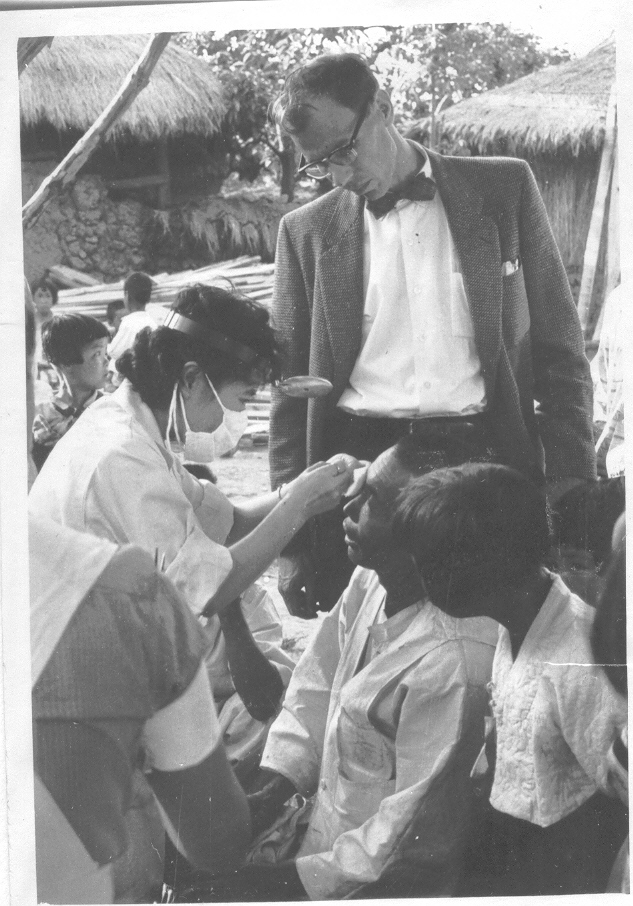
Howard Maffet, who is serving medical service in non-medical-service area for mission

Keimyung University Medical School at the time of opening
Moffett and his wife Margaret del Moffett, who had accomplished 45 years of medical missionary work in Daegu, returned to California Cafeteria, the hometown of Moffett's mother, on January 15, 1993. In 2009, he lived at Samarkand Retired Nursing Hospital and was called by God on June 2, 2013, when he was 96 years old.
Sam Moffett, the youngest son who attended the funeral, said, "My father's last will was 'Daegu is my home,' so he missed Dongsan Medical Center and Korea until the day he left and did not forget his prayers." "We hope that Keimyung University and Dongsan Medical Center will always value the spirit of its establishment, the spirit of service and evangelism," he said.
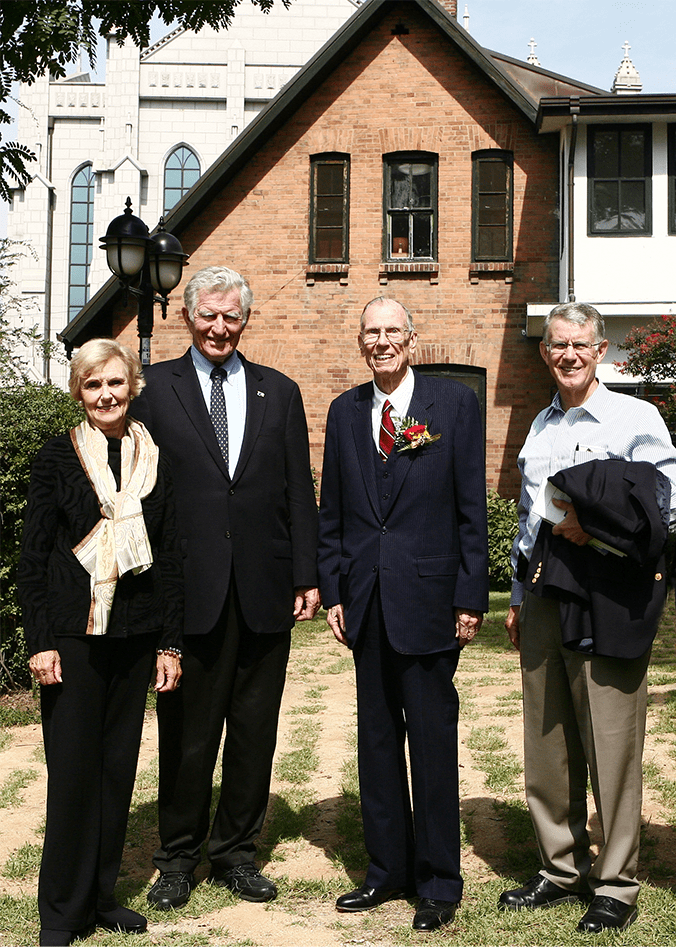
The last time I visited Korea and lived as a missionary (currently in the Department of Medical Missionary Museum), Howard Moffett, 2010
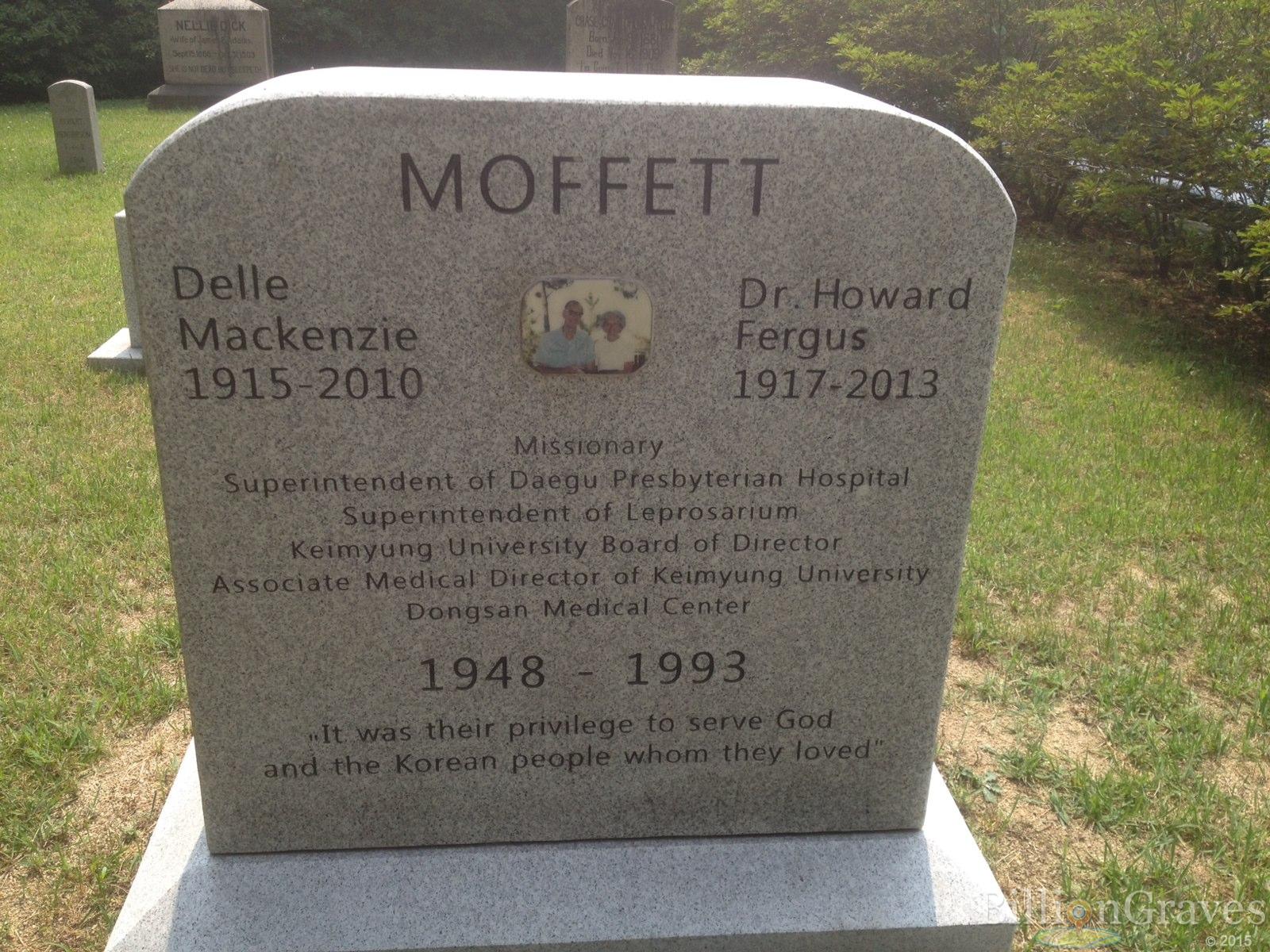
The Moffetts' Tombstone in the Grace of Mercy Garden of Keimyung University Dongsan Medical Center
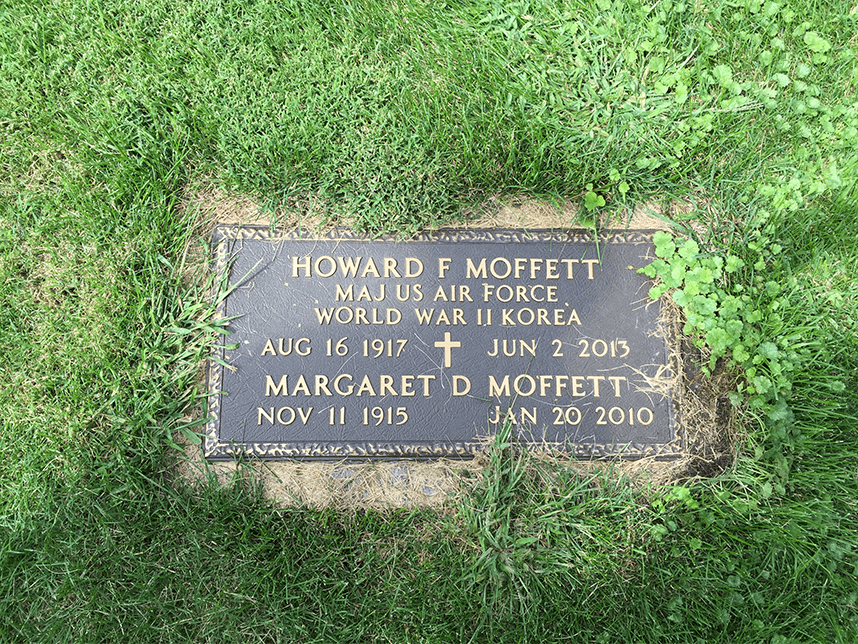
The Moffetts' Tombstone at Whitten University in Chicago